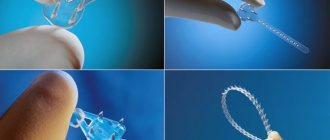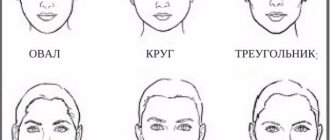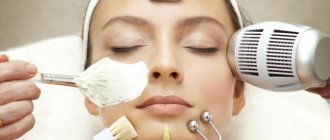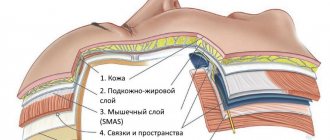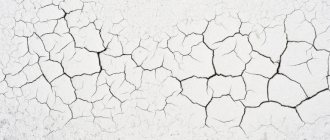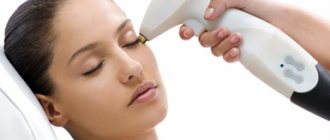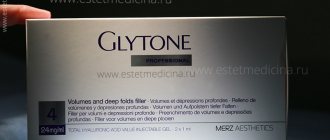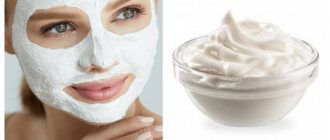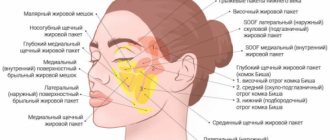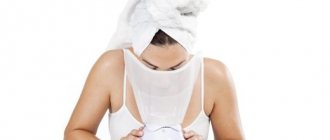The arsenal of practicing surgeons is constantly updated with various tools for correcting functional and cosmetic problems in the midface. Among them: lifts of varying degrees of aggressiveness, blepharoplasty to correct the position of the lower eyelid and preserve its youthful shape, removal and reposition of fat in the lower eyelid area, various implants for the zygomatic and orbital zones, volume replenishment using autologous fat tissue and fillers available on the market. However, the surface of the skin remains a separate task - wrinkles and sagging skin require action on the surface of the skin in order to compress collagen and tighten the skin. Laser and radiofrequency devices are successfully used for this purpose. In this article, Dr. Fred Fedok, a plastic surgeon from the USA, talks about procedures for correcting the middle third of the face: the lower eyelid.
Correction of the middle third of the face: anatomy of age-related changes
When considering the mechanisms of aging of the midface, which must be taken into account when choosing procedures for correction, the doctor pays attention to three main anatomical zones:
- lower eyelids;
- connection of the lower eyelids and cheeks;
- directly to the cheeks.
The movement and structural integrity of this area are interrelated: aging causes several negative changes to occur simultaneously in the structures mentioned above.
Various dynamic factors that influence the aging of the midface include:
- decreased skin elasticity;
- stretching of the retaining ligaments in the cheeks and eye sockets, which are connected to the skeleton, muscles and the skin itself;
- involutional changes in fatty compartments, which are a consequence of the weakening of their supporting structures and direct atrophy of adipose tissue.
All these processes occur against the background of bone loss in the orbital area and structural loss of projection.
As a result of the above changes, drooping of the eyelid margin is observed, the orbicularis oculi muscle lengthens vertically, resulting in folds under the eyes, and the fat pad of the cheek moves downwards (Fig. 1).
Rice. 1. Age-related changes in the lower eyelid and middle third of the face
The nasolabial fold becomes more pronounced, but not due to its deepening, but due to the displacement of the zygomatic tubercle downward, closer to the nasolabial fold. Thus, due to the contrast, the fold visually appears more pronounced.
At the junction of the lower eyelid and cheek, a characteristic deformation appears - a double bulge of the lower eyelid and the junction of the middle part of the face (Fig. 2). This deformation is a consequence of changes in the volume of bone and soft tissue in the periorbital and zygomatic region, as well as ptosis of soft tissue.
On a young face, this anatomical area has smooth contours and is presented as a gradual transition from the contour of the lower eyelid through the orbital ridge to the cheek. With age, these structures separate from each other, and their contours become more noticeable.
The above changes are more pronounced in patients with insufficient bony projection of the orbital rim and midface, resulting in the formation of a negative vector (Fig. 2). Signs of aging in the midface appear earlier in these patients. Insufficient support of periorbital structures leads to the appearance of:
- unaesthetic appearance of the lower eyelids;
- skeletonization of the orbital ridge;
- functional eyelid retraction;
- ectropion.
Rice. 2. (Left) A characteristic double bulge is a deformation at the junction of the lower eyelid and cheek. (Right) “Negative vector” of facial anatomy. The projection of the pupil is larger than the projection of the cheek.
Conversely, in patients with good bony projection in the midface (or positive vector), the periorbital structures are less prone to downward displacement due to age-related stretching of the cheek retinaculum muscles.
Triangles of youth
A young face, regardless of its shape, is a triangle, pointing downwards, and the base of the triangle runs along the line of the forehead. As we age and age-related changes appear, this triangle gradually blurs, transforms and slides, and on an older face it is already turned upside down at the level of the cheeks, and the bottom of the triangle runs along the bottom of the oval of the face.
In some of our patients, this picture was observed at a young age due to genetic and anthropometric characteristics.
This age triangle is further enhanced by emerging age-related disadvantages:
- nasolabial folds and tear troughs,
- lines of grief,
- drooping corners of the mouth,
- shaved,
- double chin and heavy lower face.
We can say that the face turns into a Christmas tree, the branches of which look down . No one experiences joy from such a tree, unlike the New Year's tree.
It is these “branches” that cosmetologists who want to rejuvenate the patient’s face will have to fight.
Modern methods for correcting signs of aging in the middle third of the face
Understanding of age-related anatomical changes, the popularization of new techniques and the development of new biomaterials have led to a change in the approach to midface correction. As a result, doctors are able to obtain better facial rejuvenation results compared to traditional facelift techniques. Due to the significant influence of this anatomical region on the appearance of the entire face, plastic surgeons pay special attention to rejuvenating the middle third. Modern cosmetic surgeons have a wide selection of instruments to solve a whole range of anatomical problems associated with age-related changes. These include:
- restoration of volume with fillers or autologous fat;
- blepharoplasty;
- lifting;
- correction of bone tissue.
Procedures
In aesthetic medicine, there is quite a lot of controversy about the order in which to eliminate age-related manifestations: from the general [oval of the face] to the specific [specific wrinkles] or vice versa. And when to do hardware procedures, if they are needed to give your face a youthful appearance.
Firstly, we strongly recommend doing all hardware procedures BEFORE correction of fillers or botulinum therapy.
After hardware procedures, we recommend to patients an approach from the specific to the general - firstly, it’s cheaper, and secondly, the changes are gradual and you won’t have to shock others!
But “where exactly should I start?”, “what age-related deficiencies highlight age more?” — everyone answers these questions for themselves, everyone has their own priorities.
Volume restoration for correction of the middle third of the face
The problem of soft tissue volume reduction and skeletonization, which lead, for example, to deformation of the tear trough, is in most cases solved with the help of fat and fillers.
It is volume restoration that is the most common method of correcting the middle third of the face, especially in younger patients. Both injections of your own fat and fillers available on the market provide excellent results. But fillers are used more often because their injection procedure is non-surgical and less expensive.
Based on the patient's anatomical changes, the appropriate procedure for correcting the midface can be selected. In case of slight changes, it will be enough to just replenish the volumes:
- In patients with slight excess skin and wrinkles (without eyelid displacement), slight protrusion of fat in the lower eyelid area, mild skeletonization and downward displacement of the malar fat pad, the author injects filler along the eye ridge (Fig. 3).
- To work with patients who experience more pronounced changes with a noticeable downward displacement of the malar fat pad, a slightly different volume replenishment strategy is chosen. As in the previous case, the filler is injected along the orbital ridge, but the contour of the cheekbones itself is also changed. Here, volume replacement is performed to elevate the buccal cusp. Improving the malar contour also helps reduce the severity of the nasolabial fold. Carefully introduced filler will smooth out the skeletonization of the orbital ridge, as well as the deformation of the tear trough.
Rice. 3. (Left) before and (right) after injection of HA filler along the infraorbital margin to correct tear trough deformity and skeletonization of the orbital ridge.
HA fillers, which distribute very well and have a slight lifting effect, are ideal for injection into the orbital area: they provide volume without the need for bone support; we self-align in the tissues, which reduces the risk of lumpiness in the injection area.
In the midface and lateral cheeks, it is better to use HA with a greater lifting effect and less spreading ability to restore volume and provide structural support. Such materials are introduced deeply, above the level of the periosteum. With proper assessment of the anatomy and choice of insertion technique, this procedure is performed safely, painlessly and with minimal risk of complications.
Autologous fat can also be injected into the malar region (Fig. 4). Deep fat injection makes the procedure simple, painless and safe.
Injecting fat into the tear trough should ideally only be carried out by experienced professionals, otherwise lumps of fat will be visible through the relatively thin skin of the eyelids and can only be removed surgically.
The safety of volume replacement for correction of the middle third of the face depends on the chosen technique of drug administration and the correct assessment of anatomical changes.
The author typically injects HA fillers and the patient's fat into the midface using a blunt cannula, which reduces the risk of bruising, as well as intravascular injection.
Rice. 4. Before (left) and after (right) fat grafting to correct tear trough deformity and restore cheek volume
Facial beautification: what is important to know about the new trend of 2020
Just ten years ago, plastic surgery was something inaccessible and possible only for “stars” or girlfriends of millionaires. And the range of manipulations that the doctors performed was small. Today we live in an era when almost everyone can afford to correct nature’s mistakes in appearance. Moreover, in one operation a complex of issues can be resolved at once. This trend is called “beautification”. Plastic surgeon, candidate of medical sciences, full member of the Russian Society of Plastic, Reconstructive and Aesthetic Surgeons (ROPRECH) Dmitry Saratovtsev spoke about the essence of the method .
The essence of the new trend
This direction can be described as a set of manipulations to harmonize the face, which can be carried out in various areas of the face, under one-time anesthesia.
When a patient comes for an initial consultation, he identifies the problems that concern him. The surgeon offers options for their solutions that are most suitable for the person who applies. At the same time, the main task facing the doctor is to preserve individuality, make the face more harmonious, and bring it closer to the canons of beauty, the golden ratio. Therefore, the complex of manipulations in each case is different: someone needs to reduce age-related changes, and then a SMAS lift is recommended along with blepharoplasty. And some people need rhinoplasty and a lift of the upper third of the face to make their eyes more open.
Types of manipulations
All facial beauty operations can be divided into two types. The first is work on the soft tissues of the face. This includes lifting the forehead, eyebrows, and temporal region (temporoplasty), blepharoplasty and lifting the outer corner of the eye (canthopexy), and removing Bisha's lumps. Procedures to improve the general condition of the skin of the lower face and neck are also in this category.
The second type includes all forms of operations on the bone skeleton: correction of the brow ridges, augmentation of the cheekbones and chin with the help of implants, manipulations on the upper and lower jaw. Operations in the latter zone require the simultaneous work of two specialists - a plastic and maxillofacial surgeon.
Now let's talk in more detail about each type of manipulation. Let's start with the upper zone of the face, or rather, with its lift. This correction can be carried out in two ways - open, when an incision is made at the border with the scalp, and endoscopic, through several punctures. The choice of approach is at the discretion of the surgeon. We recommend such a correction in a situation where the patient has congenital ptosis of the eyebrows and, as a consequence, overhang of soft tissues.
Next, let's look at lifting eyebrow tissue. It is carried out through an incision of several centimeters in the scalp. This manipulation can be recommended not only to eliminate age-related changes, but also to tighten the naturally drooping tissues of the upper part of the face and eliminate the “sad” look that often occurs in young patients.
Temporal lift solves the same problem . It eliminates sagging soft tissues. Access in this operation is carried out through an incision in the temporal zone, which is hidden by hair, making it invisible to others.
I would like to add a few words about a very popular trend - lipofilling . The method is based on the use of the patient’s own purified fat, which is injected into the area of the cheekbones, lips and eyebrows and replenishes lost volumes.
And, of course, we can’t help but talk about facelifts. Despite the large number of their varieties, they are all based on the principle of SMAS-lifting, or tightening of the superficial muscular aponeurotic layer. With their help, you can effectively combat age-related changes in the lower, middle zone of the face and neck.
Beautification also includes the removal of Bisha's lumps - fatty lumps under the cheekbones. This allows you to make a heavy, wide face more harmonious.
Rhinoplasty continues to be one of the most common types of correction, if only because it helps make dreams of a neat, beautiful nose come true. The surgeon can change its shape, remove the “hump” or shorten the length.
Surgeries on soft tissues in combination with manipulations on the facial skeleton give a highly aesthetic result, while the patient only needs one dose of anesthesia, which is a gentle option for the body, and this is a big plus. Today, compromises between beauty and health are a thing of the past.
Blepharoplasty for correction of the middle third of the face
Excess soft tissue and laxity in the area in question can be corrected through various surgical techniques:
- blepharoplasty;
- blepharoplasty with fat reduction;
- lifting (both transpalpebral and transtemporal).
Blepharoplasty should be performed in case of more pronounced signs of aging: excess skin on the eyelids, a large amount of protruding fat and displacement of the eyelid.
There are many techniques for performing blepharoplasty. According to the author, it is best to choose a transconjunctival or transcutaneous approach for the operation. The choice of approach is based on the patient's anatomy and history of blepharoplasty. The author, as a rule, performs lower blepharoplasty transconjunctivally with removal of excess tissue. According to the author, this is the best way to preserve the function of the orbicularis oculi muscle.
If it is necessary to perform a midface lift, correct eyelid retraction, ectropion, or install an implant, the author in most cases is inclined to transcutaneous blepharoplasty.
Transcutaneous incisions are typically made below the eyelid, at least 4 mm from the lash line, to preserve the pretarsal region of the orbicularis oculi muscle. The younger the patient, the closer the incision is made to the eyelash line. The medial part of the incision should be limited in order to preserve the innervation of the orbicularis oculi muscle.
Until the mid-90s, the surgical approach to rejuvenation of the periorbital area was limited to lower blepharoplasty with lifting the soft tissues of the eyelid, removing excess skin and excess orbital fat. Later, blepharoplasty for correction of the middle third of the face began to be performed with reposition of orbital fat (as a biological internal implant) onto the orbital rim.
In the case of a large amount of visually noticeable orbital fat, a certain part of it must be removed. If there is significant deformation of the tear trough, the author removes the lateral fat pad and repositions the nasal and central fat pads over the orbital rim.
Hypertonicity of facial muscles
When there is excessive tension in the depressor muscles (those that pull the skin and underlying tissues down), you involuntarily begin to frown, plus there is a strong tension in the neck muscles. With hypertonicity of the chin, we make uncontrolled movements of the jaw or purse our lips. All together, this leads to the early appearance of wrinkles, changes in the oval of the face and even an increase in volume in some parts of it. The most obvious way to eliminate hypertonicity is botulinum toxin injections, which give the effect of facial rejuvenation.
Lifting options for correcting the middle third of the face
There are different techniques for performing lifting procedures to tighten the midface. Most often, surgeons use a transtemporal endoscopic approach to perform this procedure. Some lifting correction techniques are performed together with blepharoplasty through transcutaneous or transconjunctival access. The goal of a midface lift is to correct the contour and position of the lower eyelid, as well as improve the eyelid-cheek connection and reposition the malar fat pad (Figure 5).
Rice. 5. Before (left) and after (right) transtemporal/transpalpebral lift with double convexity correction and cheek tubercle lift
